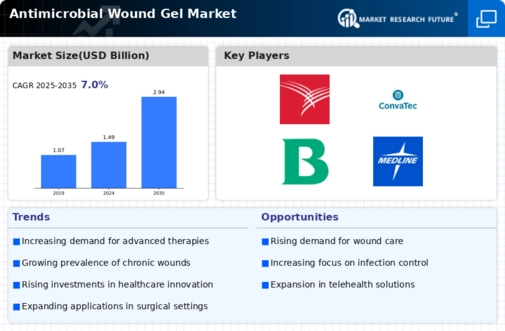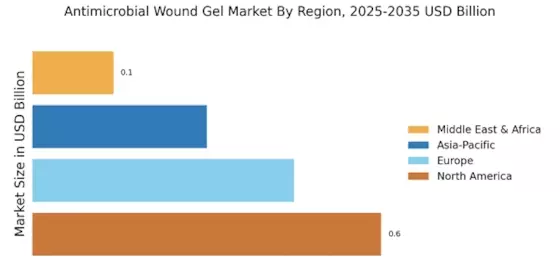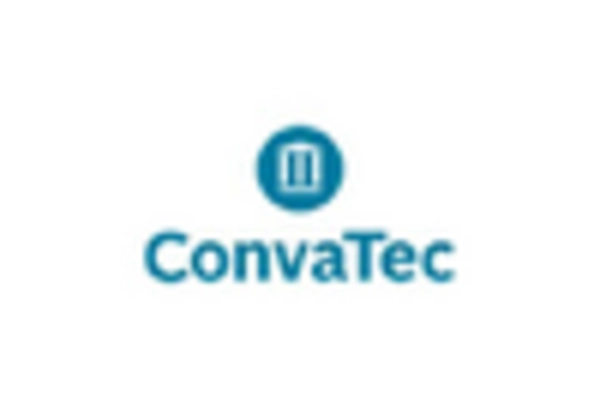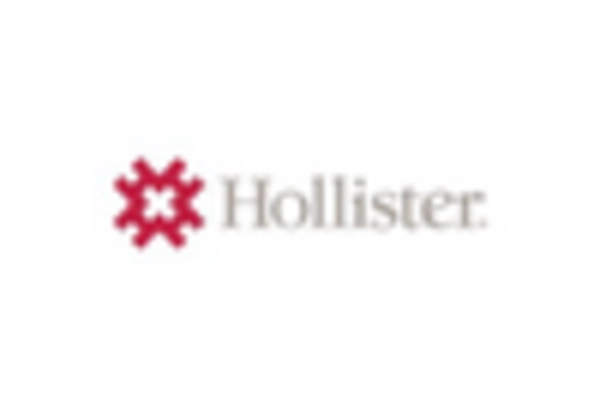Increase in Surgical Procedures
The Antimicrobial Wound Gel Market is also influenced by the rising number of surgical procedures performed worldwide. As surgical interventions become more common, the risk of postoperative infections increases, necessitating the use of antimicrobial wound gels to promote healing and prevent complications. Data indicates that the surgical wound care segment is expanding, with healthcare providers increasingly incorporating antimicrobial gels into their postoperative care protocols. This trend is expected to continue, as the focus on improving surgical outcomes and patient safety remains a priority in healthcare settings.
Rising Incidence of Chronic Wounds
The Antimicrobial Wound Gel Market is experiencing growth due to the increasing prevalence of chronic wounds, such as diabetic ulcers and pressure sores. These conditions often require specialized treatment to prevent infection and promote healing. According to recent data, chronic wounds affect millions of individuals, leading to a heightened demand for effective wound care solutions. Antimicrobial wound gels, known for their ability to inhibit bacterial growth, are becoming essential in managing these wounds. The market is projected to expand as healthcare providers seek innovative products that enhance patient outcomes and reduce the risk of complications associated with chronic wounds.
Technological Innovations in Wound Care
The Antimicrobial Wound Gel Market is benefiting from ongoing technological innovations that enhance the efficacy of wound care products. Advances in formulation and delivery systems are leading to the development of more effective antimicrobial gels that provide sustained release of active ingredients. These innovations not only improve the healing process but also cater to the diverse needs of patients. Market analysis indicates that companies investing in research and development are likely to gain a competitive edge, as consumers increasingly seek advanced wound care solutions that offer both safety and effectiveness.
Growing Awareness of Infection Prevention
In the Antimicrobial Wound Gel Market, there is a notable increase in awareness regarding infection prevention among healthcare professionals and patients alike. This awareness is driving the adoption of antimicrobial wound gels, which are designed to minimize the risk of infections in wounds. As healthcare systems emphasize the importance of infection control, the demand for products that offer antimicrobial properties is likely to rise. Market data suggests that the infection prevention segment is a key driver, with antimicrobial wound gels being recognized for their role in improving healing rates and reducing healthcare costs associated with wound management.
Aging Population and Associated Health Issues
The Antimicrobial Wound Gel Market is significantly impacted by the aging population, which is more susceptible to various health issues, including wounds that require specialized care. As individuals age, the skin becomes thinner and less resilient, increasing the likelihood of wounds and infections. This demographic shift is driving demand for effective wound management solutions, including antimicrobial gels. Market projections suggest that as the population ages, the need for products that address the unique challenges of wound care in older adults will continue to grow, further propelling the antimicrobial wound gel market.


















Leave a Comment